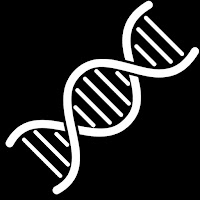Humans have more power to think and speak properly as compared to other living organism present on earth. This is due to the presence of a great network present in our brain known as Neurons. These are the building blocks of our nervous system. Structurally, neurons consist of axons. These axons are cable-like cell offshoots that transmit electrical signals to other neurons or in simple words, these axons transmit information to other neurons. Our nervous system includes the brain and spinal cord. Both of these are the command centers of our body. Before discussing about the potential role of WNK genes, let us know a little about neurodegenerative diseases.
What are neurodegenerative diseases?
- In movement of muscles
- In mental functioning
- In reacting to something
- In speaking
- In breathing etc.
How researchers found WNK gene in fruit fly?
Functions of WNK gene:
WNK appears to be part of a regulatory network that controls both the formation during development and also the degeneration of neuron connections in adult animals. The gene contains the blueprint for a protein known as a kinase. This refers to an enzyme that “glues” certain chemical components to other proteins, thus controlling their activity. The WNK kinase regulates and supports a factor called NMNAT, which protects the neurons. At the same time, it inhibits at least two other proteins called Sarm and Axed. It is known that they both play an important role in the active neurodegeneration of axons.
WNK is necessary for connecting the neurons during the development of the nervous system. If the gene is not present, the branching of the axons does not take place. Axons of neurons are usually connected to many different receptor cells via synapses. “Without the WNK protein, functional axonal branches are largely absent,” emphasizes Izadifar.
Therapeutic use of WNK gene in neurodegenerative diseases:
Prof. Dietmar Schmucker from the LIMES Institute at the University of Bonn said that according to their study WNK kinase may perhaps be of therapeutic use in the fight against neurodegenerative diseases. It can be overactivated by using an active ingredient which results in increasing its ability to protect neurons.
The results of this study may offer new impetus for the understanding of how neurodegenerative diseases occur in humans and how they could possibly be treated. This is because WNK kinases also exist in mammals, in mice as well as in us. Not only that, they also appear to be essential for protecting our neurons, too. The results of a collaboration with the research group led by Prof. Franck Polleux at Columbia University in New York at least point in this direction. The team was able to show that WNK kinases are also important for the formation of axonal branches in mice and that their loss leads to the degeneration of axons.
“It is also known that certain WNK mutations in humans lead to nerve damage, called peripheral neuropathy, which is accompanied by progressive sensory disorders in the arms and legs,” explains Schmucker.
Further study of WNK genes can be a revolutionary uplift in the treatment practices neurodegenerative diseases.
References:
- Materials provided by University of Bonn. Note: Content may be edited for style and length.
- Azadeh Izadifar, Julien Courchet, Daniel M. Virga, Tine Verreet, Stevie Hamilton, Derya Ayaz, Anke Misbaer, Sofie Vandenbogaerde, Laloe Monteiro, Milan Petrovic, Sonja Sachse, Bing Yan, Maria-Luise Erfurth, Dan Dascenco, Yoshiaki Kise, Jiekun Yan, Gabriela Edwards-Faret, Tommy Lewis, Franck Polleux, Dietmar Schmucker. Axon morphogenesis and maintenance require an evolutionary conserved safeguard function of Wnk kinases antagonizing Sarm and Axed. Neuron, 2021; DOI: 10.1016/j.neuron.2021.07.006




